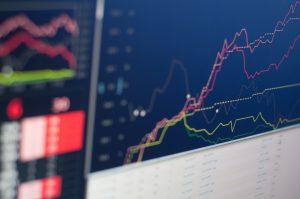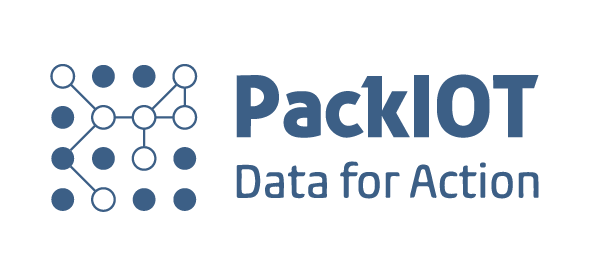In an industrial landscape where data is the new oil, organizations are tirelessly working to extract, process, and make sense of an ever-growing sea of information. While metrics and KPIs serve as the navigational stars in this complex universe, the key to unlocking actionable insights often lies in the presentation of that data. This is where data visualization comes into play.
For the industrial sector, which often deals with large volumes of complex metrics, data visualization is not a mere add-on; it’s a necessity. This article aims to explore why data visualization is so pivotal in turning raw metrics into insights that drive meaningful action.
What is Data Visualization?
At its core, data visualization is the practice of converting raw, unstructured data into a visual format. However, this simple definition doesn’t capture the breadth and depth of what data visualization truly encompasses. The technique employs an extensive array of visual elements—ranging from traditional charts and graphs to complex heat maps and 3D models—to represent data in a manner that is both intuitive and insightful. But why does this graphical representation matter, especially in an industrial setting?
The Evolution of Data Complexity
Industries have shifted from collecting a few key metrics to gathering vast amounts of data through IoT sensors, machine logs, and real-time monitoring systems. This wealth of data is much more than what traditional spreadsheets or text-based reports can handle effectively. In the industrial context, data visualization is not just about converting numbers into graphs; it’s about managing complexity and making data interpretable at a glance.
The Human Element
Human cognition is wired for visual input. We can process visual information 60,000 times faster than text, according to some studies. This has profound implications for industrial settings, where quick decision-making can drastically affect efficiency, safety, and profits. By visualizing data, you’re aligning the data interpretation process with how the human brain naturally works, making it easier to identify trends, spot outliers, and grasp complex statistical information.
Types of Data Visualization in Industry
- Time-Series Charts: Essential for tracking changes over time, be it machinery efficiency, employee performance, or energy consumption.
- Heat Maps: These provide a two-dimensional representation of data where values are color-coded, highly useful in identifying performance hotspots or areas in need of attention.
- Geospatial Maps: For industries with multiple locations or those that rely heavily on logistics, mapping data on geographical layouts can be particularly enlightening.
- Interactive Dashboards: Beyond static charts or graphs, interactive dashboards allow users to drill down into specific metrics, offering layers of granularity that can be critically informative.
- Network Diagrams: In interconnected environments like supply chains or multi-machine layouts, network diagrams can help visualize complex relationships and dependencies.
Beyond Aesthetics: Actionability
While data visualization can be beautiful, its primary function in an industrial context is not aesthetic; it is pragmatic. Good data visualization should prompt action. Simplifying data into digestible formats enables decision-makers to see the correlations, trends, and anomalies that are otherwise hidden in a sea of numbers. This can lead to timely interventions, predictive maintenance, and even strategic shifts in business models.
The Right Data, The Right Format
Not all data is equally valuable, and not all visualizations serve the same purpose. In an industrial setting, the choice of what to visualize and how to visualize it can significantly influence the kind of insights you generate. This adds an additional layer of strategy to data visualization: the art of selecting the most meaningful data and choosing the most effective way to present it.
In summary, data visualization is far more than just a “nice-to-have” feature for interpreting metrics; it’s a critical tool that integrates analytical capabilities with human cognition. By intelligently employing data visualization, industries can not only comprehend the complexities of their operations but can also gain actionable insights that lead to improved outcomes.
Why is it important?
Imagine a factory floor with a dozen machines, each producing real-time data on performance, output, and efficiency. A text-based report might tell you that Machine A’s productivity dipped by 12% last month, but a well-crafted dashboard with vibrant charts can show you exactly when and why this happened—and what you can do about it.

The Pillars of Actionable Insights
Contextual Awareness
While numbers don’t lie, they often don’t tell the full story. It’s the context that breathes life into data. Visualizing data brings in the much-needed spatial and temporal context that can be crucial for actionable insights. For instance, seasonal patterns in production metrics can be easily identified through a simple line graph, empowering managers to plan resources accordingly.
Real-time Decision Making
Industrial processes don’t wait for weekly reports. They happen in real time, and so should the decision-making process. Interactive dashboards can reflect live data, enabling instantaneous decisions that can make or break a process.
Identification of Outliers
In an industrial setting, outliers are not just data points; they can be early warning signs of system failures or bottlenecks. Through visualization, such anomalies become immediately noticeable and can be addressed before they escalate into larger issues.
Case Studies in the Industrial Sector
Manufacturing
A global automobile manufacturer used data visualization to track and improve overall equipment efficiency (OEE). By displaying real-time data through heat maps and trend lines, they were able to identify bottlenecks quickly and redistribute workload, improving OEE by over 18% within a year.
Energy
An energy provider employed visual dashboards to monitor various factors affecting power production rates. This visualization enabled them to react quickly to changes in weather conditions, thereby optimizing energy output and reducing waste.
Boosting Efficiency in the Paper Industry with Packiot Software
A multinational paper manufacturing company was grappling with a 54% rate of unplanned machine stoppages. The introduction of Packiot’s data visualization software, displayed on a TV dashboard on the factory floor, dramatically changed this. Offering real-time metrics in a format easily understandable by both operators and senior management, the company quickly shifted from reactive to proactive decision-making. Within a short period, the rate of unplanned stoppages plummeted, achieving a 100% reporting rate for stoppages, thus revolutionizing operational efficiency.
Transportation
Faced with the challenge of managing approximately 1GB of daily GPS data, an unnamed client turned to geospatial analytics. Utilizing Google’s BigQuery for data analysis and Looker Studio for visualization, we could help the company easily identify unofficial displacements and other itinerary outliers. An interactive dashboard showcased crucial KPIs and integrated Google Maps to visualize deviations from planned routes. This seamless blend of data and visualization empowered the company to make quick, informed decisions that significantly improved operational efficiency and compliance.
These cases underscore the transformative power of data visualization in extracting actionable insights from complex industrial data.
Best Practices for Data Visualization in the Industrial Sector
- Choose the Right Tools: Not all data visualization tools are created equal. Select a tool that can handle your data’s volume and complexity.
- User-Centric Design: Dashboards and charts must be designed keeping the end-user in mind. After all, actionable insights are valuable only if they can be easily understood and acted upon.
- Regular Updates: The landscape of industrial metrics is ever-changing. Your data visualization methods should evolve accordingly.
Conclusion
The complexities inherent in industrial metrics make data visualization not just useful but essential. With the right implementation, it can be the lens through which organizations see their performance, enabling them to make timely and informed decisions that drive success.
Through the strategic use of data visualization, industry leaders can make their data work for them, turning raw numbers into actionable strategies for continuous improvement and long-term success. So if you haven’t already, it’s time to visualize your way to better insights and smarter decisions.




